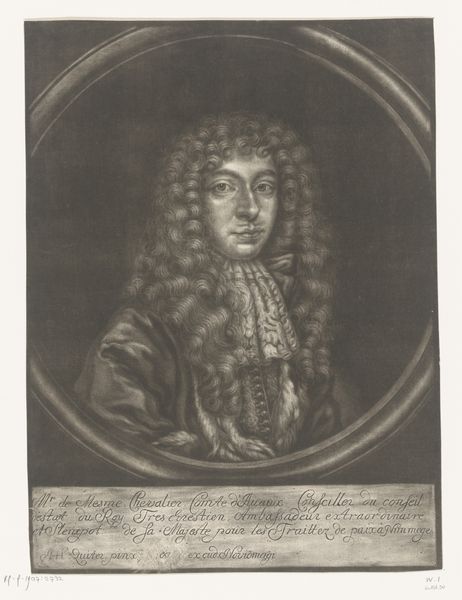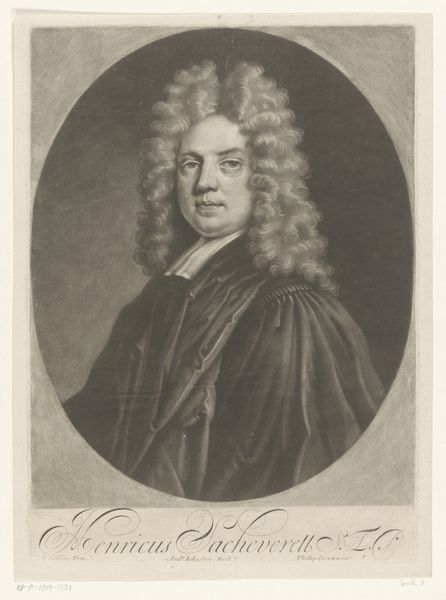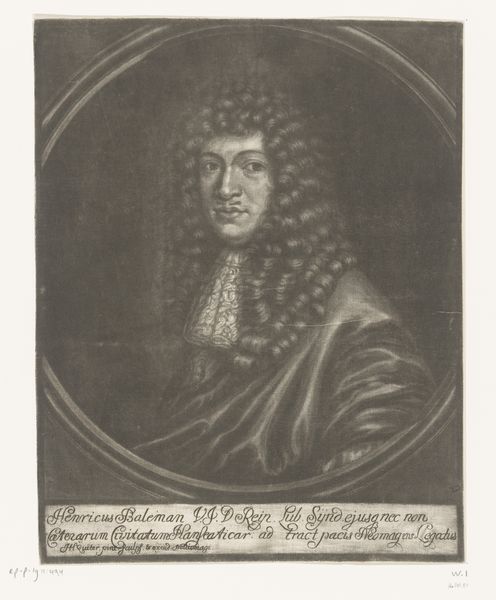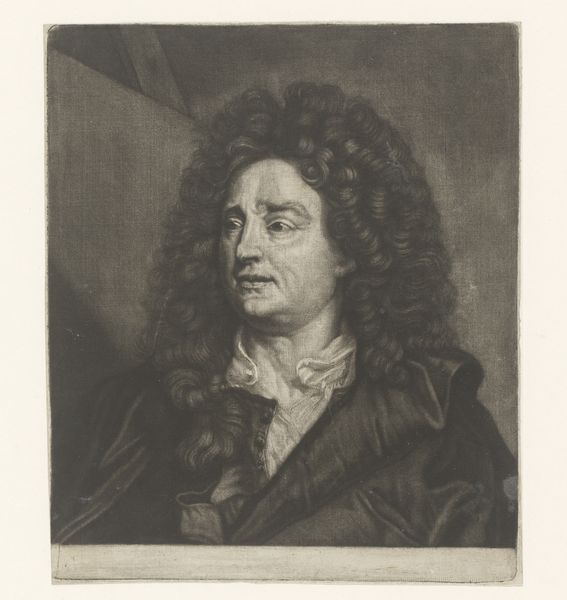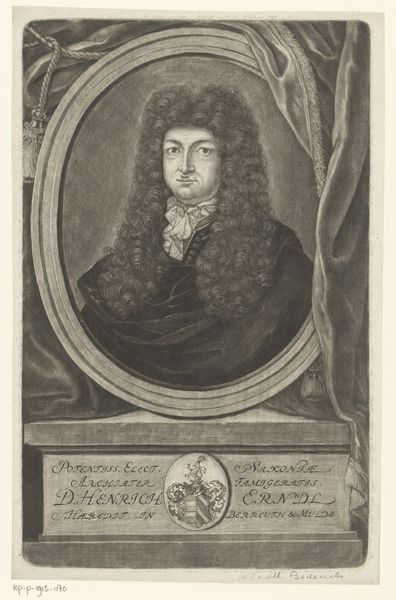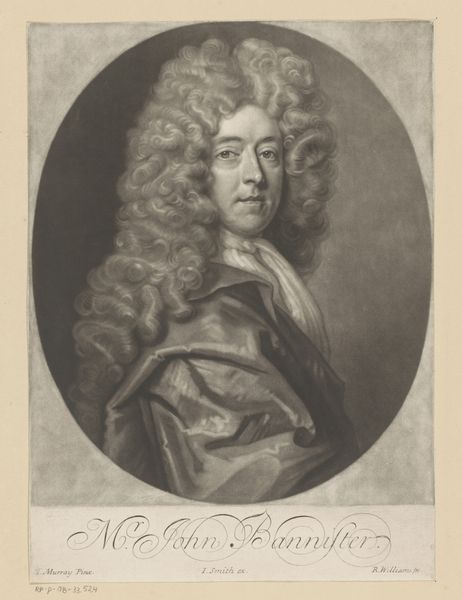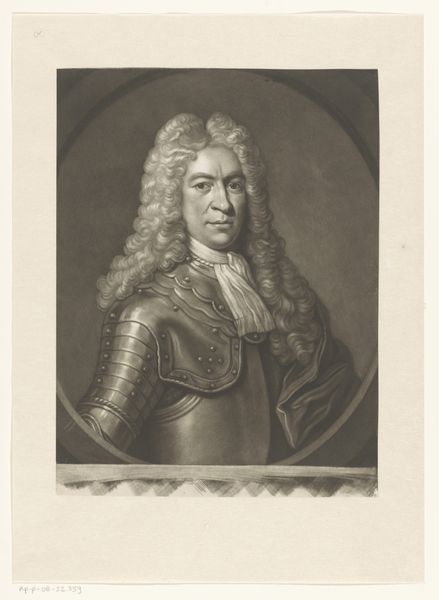
drawing, print, charcoal
#
portrait
#
pencil drawn
#
drawing
#
baroque
# print
#
pencil sketch
#
charcoal drawing
#
pencil drawing
#
framed image
#
portrait drawing
#
charcoal
Dimensions: height 333 mm, width 258 mm
Copyright: Rijks Museum: Open Domain
Curator: Edward Lutterell created this likeness of Francis Higgins sometime between 1680 and 1700. It's presented as a drawing, employing charcoal, likely intended as a print. Editor: The image evokes a certain reserved formality. Higgins' face and posture are very frontal and fill up the majority of the space. But, looking closer, his expression reads as rather thoughtful, maybe even a touch melancholic. Curator: Portraiture in this era, particularly of clergy, served a specific social function. It was about representing status, piety, and the established order, using symbolism and carefully constructed imagery to convey power and influence within the church and broader community. The Baroque style emphasized drama and grandeur in depicting sitters of consequence. Editor: I find myself immediately drawn to the wig. Beyond mere fashion, that enormous wig signified not only wealth and status, as you mentioned, but perhaps also intellectual heft. Think about the weight, literal and metaphorical, someone bore while wearing that! The stark white collar accentuates his connection with the divine. Curator: Absolutely. The presence of the wig and clerical dress point directly to a hierarchy of religious, political and class structures inherent to 17th and 18th century society, even dictating pose and presentation for social consumption. These depictions cemented an ideological point that some held dominion over others. Editor: But it's intriguing to ponder Higgins himself beyond the societal costume. Look at the gentleness suggested in his eyes, a subtle hint of humanity behind the formal presentation. Could there be internal conflict here? Perhaps between his personal convictions and the demands of his position? Curator: I think that's an astute reading, considering how portraiture was employed at the time. It had less to do with depicting true personality, more about performing roles of privilege for posterity. Lutterell's image here performs a cultural purpose, showing what roles existed for men of power in British society. Editor: Regardless, Lutterell invites us to contemplate the person beneath, to delve into our perception of cultural conventions and recognize that within them exists individuality. Curator: It leaves you wondering who Higgins truly was beyond his reverendship. Editor: Precisely, which proves the magic of even a straightforward seeming portrait—it gives glimpses beyond visibility, whispering about more profound connections.
Comments
No comments
Be the first to comment and join the conversation on the ultimate creative platform.

